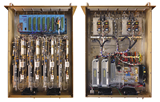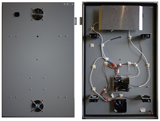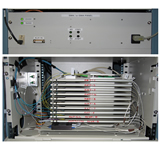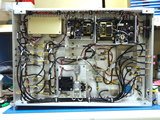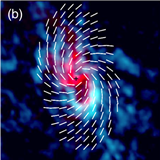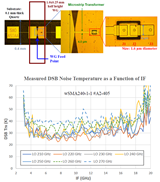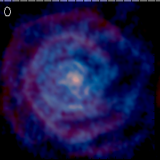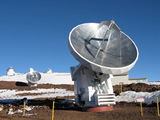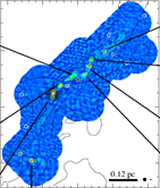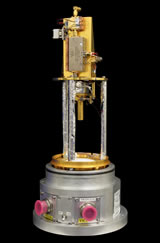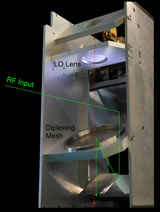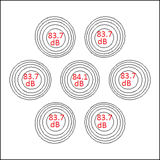SAO/ASIAA Submillimeter Array (SMA)
The Submillimeter Array (SMA) was dedicated on Mauna Kea in Hawaii during November 2003, and has been operational ever since. It is the only interferometer operating at submillimeer wavelengths, providing the highest angular resolution at this wavelength. This unique advanced telescope is a collaboration between the ASIAA and the Smithsonian Astrophysical Observatory (SAO) in the US.
SMA consists of eight 6-meter antennas, with two of them (including the associated electronics and receiver systems) delivered by ASIAA under close collaborations with university groups and industry in Taiwan. It operates at the frequencies of 230, 345, 400, and 690 GHz. It can be arranged into configurations with baselines as long as 509 m, allowing us to observe submillimeter emission from warm, dense gas and dust at unprecedented high resolutions of up to 0.1 arcsecond. The SMA targets the cold interstellar medium with a great assortment of spectroscopic tools, diagnosing cool regions in the immediate vicinity of both young and evolved stars, the disks from which stars and planets form, and the active star forming regions in galaxies.
Some 533 papers have been produced, 231 of which have ASIAA co-authors and 108 papers have ASIAA first authors. Some of the most important and exciting results obtained since the SMA dedication include the use of a number of molecular lines at different excitation energies to study the circumstellar environment of two young stars (HH211, HH212). The higher excited lines can probe much closer to the central star and reveal the manner in which energetic material is being ejected in the form of bipolar jets. These images are the best ones ever made for molecular ejection, which is now understood as the means by which a circumstellar disk can remove excess angular momentum to facilitate accretion of matter onto the central star.
As a partner of the SMA project, ASIAA contributes towards the maintenance and operation of the array on Mauna Kea. ASIAA has a small local staff residing in Hilo, Hawaii. In addition, the scientific and engineering staff visits the site regularly, and conducts remote operation from Taipei.
